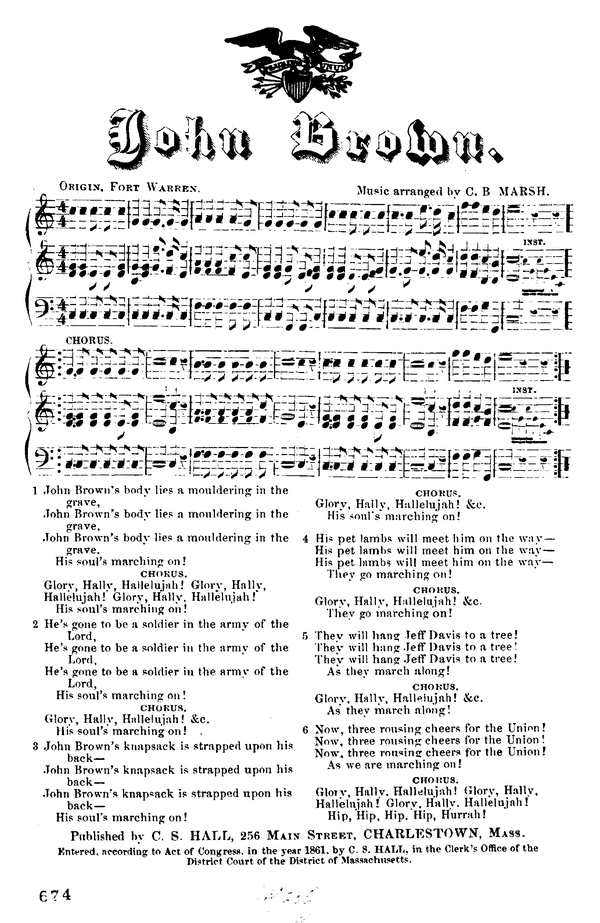The Philadelphia Connection to Famous War Songs
Posted By Norman Gasbarro on November 23, 2016
A number of the most stirring songs popular in the Civil War period originated in or were identified with Philadelphia. One of the most prolific lyricists of the time was Sep Winner, who gave to the camps “The Arms of Abraham,” “Give Us Back Our Old Commander,” “Baxter’s March” and the “Zouave Quickstep.,”
The author of “When Johnny Comes Marching Home,” Thomas Brigham Bishop, of Wayne, Maine, lived in his later years… [in Philadelphia] where he died on 15 May 1905….
Many versions have been printed with regard to the “John Brown Song.” The score is included in a collection published by Oliver Ditson and Company, of Boston, in 1861, under the title “John Brown’s Ghost.” In 1863, the Supervisory Committee for recruiting Colored Regiments printed the words with the statement that the author of the original version was H. H. Brownell, of Hartford, Connecticut. [But] the facts concerning this, the most popular of all songs of the camp and march… [were] compiled by Gen. Oliver C. Bosbyshell… [who] says:
“Mr. William Steffe, who resided many years [in Philadelphia before the Civil War] wrote the music to which the “John Brown Song” was attached…. The Methodists afterward applied the catchy tune to “Say, Brothers, Won’t You Meet Us,” adding the chorus, “Glory, Glory, Hallelujah!”
“In 1861, while Col. Fletcher Webster‘s 12th Massachusetts Regiment was encamped at Fort Warren, it included the Brockton Military Band. Four members of the regiment formed an excellent quartette. One of them named John Brown was the butt of much wit, due to the similarity of his name to the famous abolitionist. From this circumstance were evolved the ringing words which were fitted to Steffe’s music and included the Methodist “Glory, Hallelujah!” The Brockton band adopted the song, and when superseded by Patrick Gilmore and his band, the latter took it up and played it on all occasions. Gilmore afterward published the march….
“With Gilmore and his band in the lead, the 12th Massachusetts regiment marched down Broadway, New York City, every one of its thousand men singing the great song thus strangely evolved. They sang it through Philadelphia and the length of Pennsylvania Avenue in Washington, and its echo was heard wherever loyal citizens gathered…. Thus the music written in Philadelphia… became an inspiration, a paen of victory for the loyal North.”
It was a Philadelphian, Private A. D. Frankenberry, of the 15th Cavalry, who, with the Signal Corps on Kenesaw Mountain, sent Sherman’s message by flag over the heads of the Confederates to Corse’s defenders at the supply depot of Allatoona Pass, which inspired P. P. Bliss to thrill the nation with “Hold the Fort, for I am Coming.”
The story above is adapted from Philadelphia in the Civil War, 1861-1865, A Complete History, by Frank H. Taylor, published in 1913, pages 314-315. The photograph of the “John Brown” sheet music is from the Library of Congress.
 ;
;



Comments